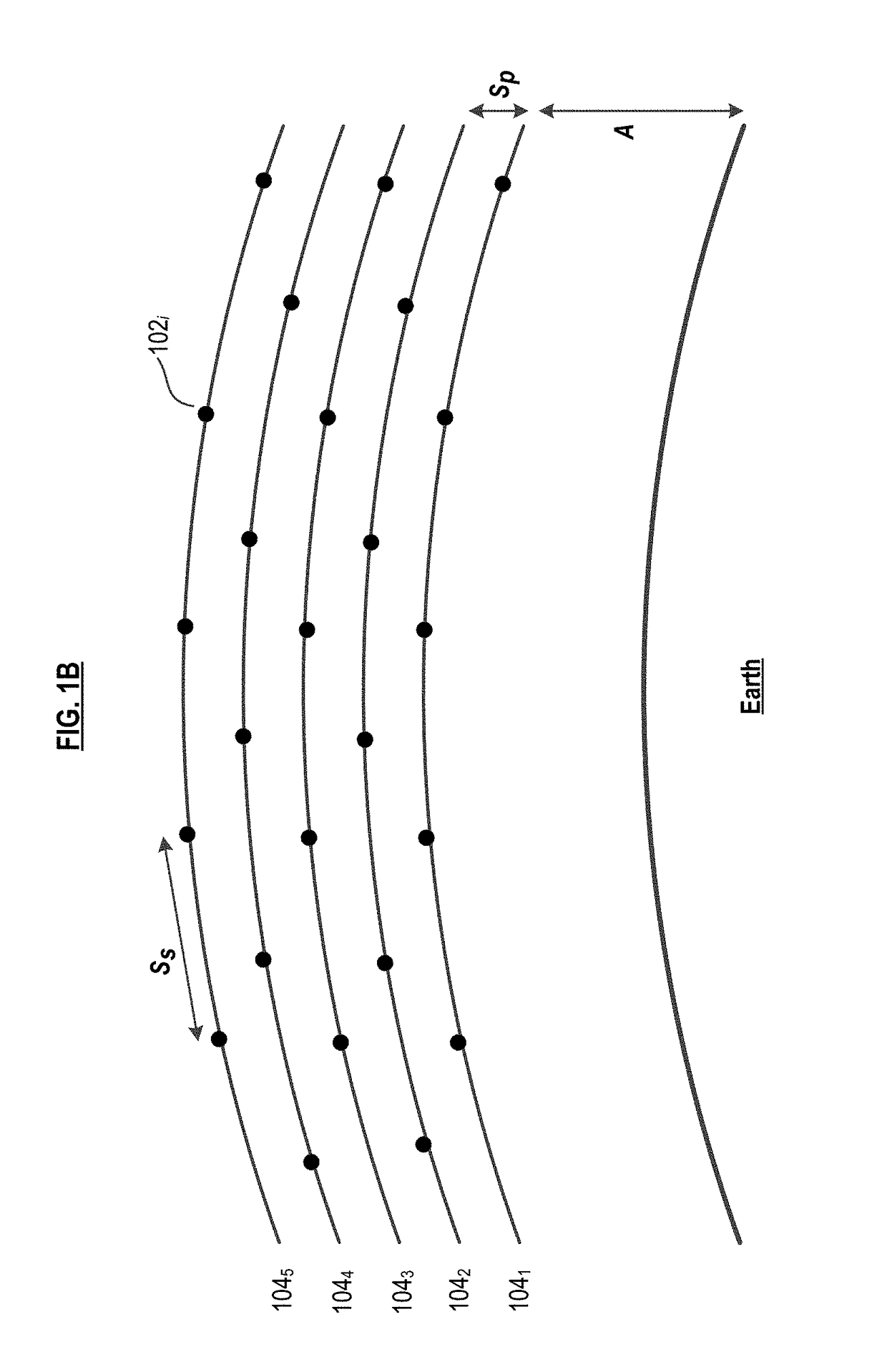Constellation Configuration for Constellations having a Large Number of LEO Satellites
a constellation and constellation technology, applied in the field of constellations, can solve the problems of increasing the path loss of rf transmission, increasing the launch and transfer cost, and exceedingly difficult constellation design, and achieve the effect of increasing the level of passive safety
- Summary
- Abstract
- Description
- Claims
- Application Information
AI Technical Summary
Benefits of technology
Problems solved by technology
Method used
Image
Examples
Embodiment Construction
[0031]Those skilled in the art will appreciate that the term “altitude” is referenced to the ground, which changes in radius from the center of the Earth by up to about 30 km depending on surface location. Orbits are ellipses with a narrowest part (minor axis) and a widest part (major axis) through the center; the semi-major axis is half of the major axis and describes the average height of an orbit. For simplicity, the term “altitude” is used in this disclosure in instances in which it might be more appropriate to reference “SMA;” those skilled in the art will recognize those instances and understand the distinction.
[0032]FIGS. 1A and 1B depict satellite constellation 100 in accordance with the illustrative embodiment of the present invention. In the illustrative embodiment, satellite constellation 100 provides internet connectivity to a plurality of users, which can be residential or business users. Constellation 100 includes a plurality of satellites 102i where i=1, m (collective...
PUM
 Login to View More
Login to View More Abstract
Description
Claims
Application Information
 Login to View More
Login to View More - R&D
- Intellectual Property
- Life Sciences
- Materials
- Tech Scout
- Unparalleled Data Quality
- Higher Quality Content
- 60% Fewer Hallucinations
Browse by: Latest US Patents, China's latest patents, Technical Efficacy Thesaurus, Application Domain, Technology Topic, Popular Technical Reports.
© 2025 PatSnap. All rights reserved.Legal|Privacy policy|Modern Slavery Act Transparency Statement|Sitemap|About US| Contact US: help@patsnap.com



